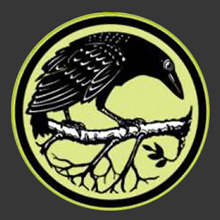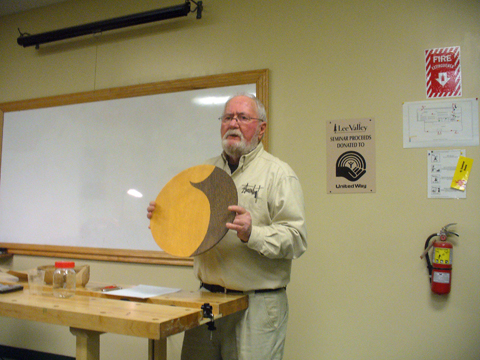
His presentation was a combination of how and why he became a woodturner, his thoughts on woodturning as an artistic approach, his observations on design and form and how he creates his perforated turnings. He gave an excellent in-depth tutorial on his technique that included a live demonstration. There were also several of his beautiful pieces on display that he used to highlight a point or to clarify. Seeing, touching and being able to hold these pieces of art was a treat in itself!
Throughout his career as a university professor Zalman dreamed of becoming a woodturner. After retiring and moving to Nova Scotia his chance to pursue this dream arrived and in 1999 he started turning. After a couple of years of extensive training, with both professional instruction and his own perseverance, Zalman began seeking something more than the traditional bowls and platters that he had been making. This search led him to creating thin-walled vessels and then the addition of perforations.
His perspective on wood as a medium was a welcomed view. Even with its limitations, like movement and decay, he believes that the advantages of wood adds to the artistic process. With its unique textures, colors and grain, wood offers lots of opportunities for expression, and a lot of possibilities that have yet to be explored. In regards to perforations, his explanation of using both the negative and positive space was a happy exercise in ‘seeing’.
The types of wood that is preferred for perforated turnings is Holly, Poplar, Ash and Maple. He looks for a wood that is not too hard or not too soft. Since the walls should be no more than 1/8″ thick it is important to have a wood that is easy to work with while offering strength to the finished piece.
Zalman starts turning his piece from the outside in. Working an inch or so at a time, he takes the wood down to it’s desired thickness. By allowing as much wood as possible to be present throughout the process it gives the thin wall maximum support. It is also brought as close to its finished state as possible at this time. The reason finishing is done now is that the design of his pieces don’t always lend themselves to traditional chucking methods and it is likely that there won’t be another chance to do it!
Once his piece is turned it is time to do the perforations. To make these he hand-draws on his design, ensuring that he leaves a reasonable sized ‘wall’ between each perforation. If the ‘wall’s are too small they will break and if too large it may not fit the design well. He then uses a Dremel tool with a diamond tipped, spear shaped burr to create the ‘hole’.

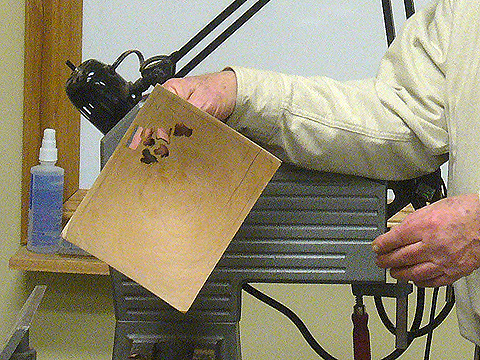
This is followed by finishing the edges of the perforations with a grinder burr and then a final sand with thin strips of sandpaper.
Zalman uses a Dremel tool over the higher speed rotary tools simply because he feels it offers more control.
He finishes his pieces primarily with Danish or Tung oil. For items that require color he uses artist quality felt-tipped markers or fluid acrylic paints. Depending on the intricacies of his design a piece can take weeks to complete.
Here are some photos of the various pieces that were there on display:
This is a beautiful ‘flower’ that sits inside of a bowl:
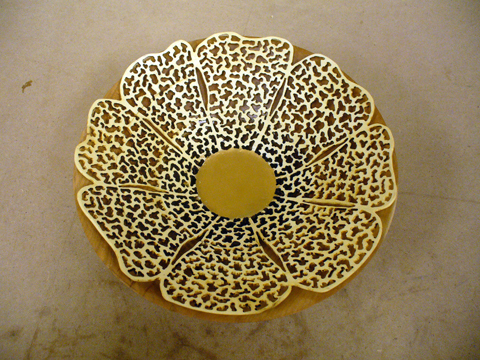
This is an abstract bowl made of laminated Holly showing perforations and burning:

A perforated wing bowl:
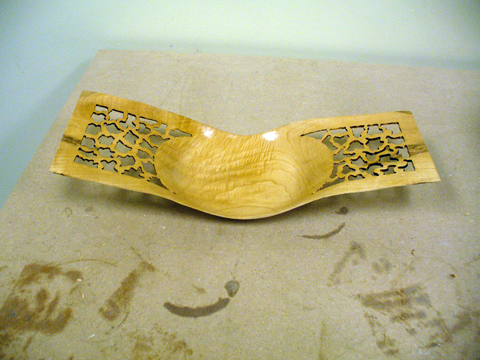
A platter mad of Holly showing extensive perforations and painted icons:

In addition to the perforated turnings there were also a couple of pieces showing other styles that Zalman also does:
Here is a Native style basket weave platter:
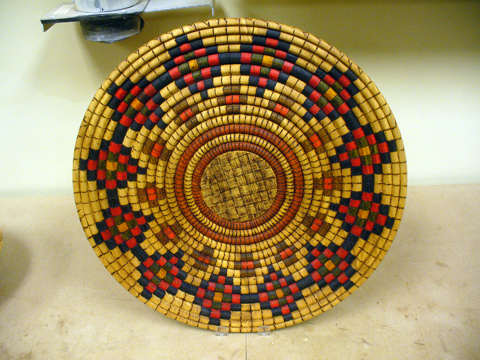
And a segmented platter of Yellowheart and Wenge:
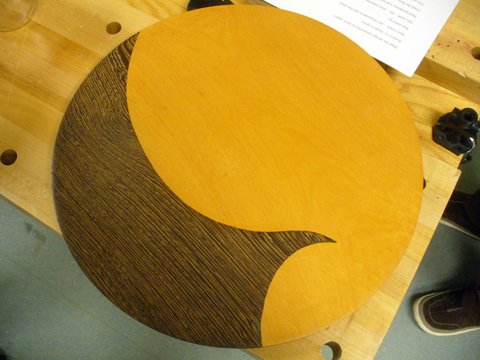
This was an exceptional presentation and it made for a great evening! This was confirmed by the keen interest shown by all the attendees. Thank you, Zalman Amit!
Zalman Amit is a member of the Nova Scotia Designer Crafts Council and Peer Gallery, an artists’ co-operative in Lunenburg, NS, where you can see some of his work on display. Click the links to visit his Gallery Bio and Gallery Photos. You can also see more of his work at An Exhibition of Photography and Woodturning, a Nova Scotia eGallery.
This presentation was part of a week long celebration of woodturning in Nova Scotia sponsored by Lee Valley in conjunction with the Nova Woodturners Guild. Once again, my hat is off to Lee Valley and event coordinator, Scott Croucher, – this time, for bringing Mr. Amit to our attention. It was a great evening!
Back to the shop…
